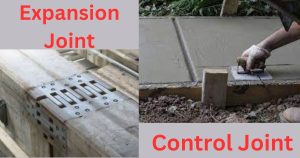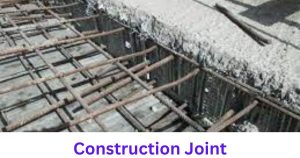Concrete joints are intentional separations or divisions created in a concrete structure to control cracking, accommodate movement, and enhance overall performance.
Types of Concrete Joints
In this article, we will discuss types of concrete joints, their purposes, and answers of some commonly asked questions about concrete joints.
Control Joints:
These are planned, deliberate separations in the concrete slab that control where cracks will occur due to shrinkage as the concrete cures. Control joints help prevent unsightly random cracks and ensure that cracks occur in a controlled, predictable manners.
Expansion Joints:
Concrete structures expand and contract due to temperature variations and moisture changes. Expansion joints, often made with materials like rubber or neoprene, allow the concrete to expand without causing damage.

Construction Joints:
These joints occur when concrete pouring is halted, and a new batch of concrete is poured later. Properly constructed construction joints ensure the two concrete sections bond securely and form a continuous surface.

Isolation Joints:
When a concrete structure comes in contact with another material, such as a foundation or a column, isolation joints prevent direct contact and allow independent movement.
Purposes of Concrete Joints Crack Control.
One of the primary purposes of these joints is to control cracking. Control joints guide where cracks will form, ensuring they are in straight lines or at specific locations. This not only enhances the appearance but also prevents uncontrolled cracking that could affect structural integrity.
Preventing Over-stress:
Without proper joints, concrete structures might experience over-stress, due to expansion and contraction. Expansion joints absorb these forces, reducing the likelihood of cracks and other forms of damage.
Minimizing Displacement:
Joints help accommodate movement caused by external factors like temperature changes or settling of the ground. By allowing controlled movement, joints prevent displacement that could lead to structural issues.
Commonly Asked Questions about Concrete Joints.
-
Why do concrete structures need joints?
Concrete structures need joints to prevent uncontrolled cracking, accommodate movement, and ensure the overall stability and longevity of the construction. Joints help manage stress and displacement that occur due to factors like temperature changes and settling.
-
How far apart should control joints be placed?
The spacing of control joints depends on various factors, including the concrete mix, thickness of the slab, and environmental conditions. As a general guideline, control joints are typically spaced at a distance of 24 to 36 times the thickness of the slab.
-
Can concrete joints be added to an existing structure?
While it’s more challenging to add joints to an existing concrete structure, it is possible in some cases. However, it’s essential to consult with a structural engineer to assess the feasibility and potential impact on the structure’s integrity.
-
What materials are used for expansion joints?
Expansion joints are often made from materials like rubber, neoprene, or cork. These materials are flexible and can absorb the movement of the concrete without causing damage.
Conclusion
By using joints in concrete your structure will be safe and durable for more years. those joints plays a very important role in construction.
